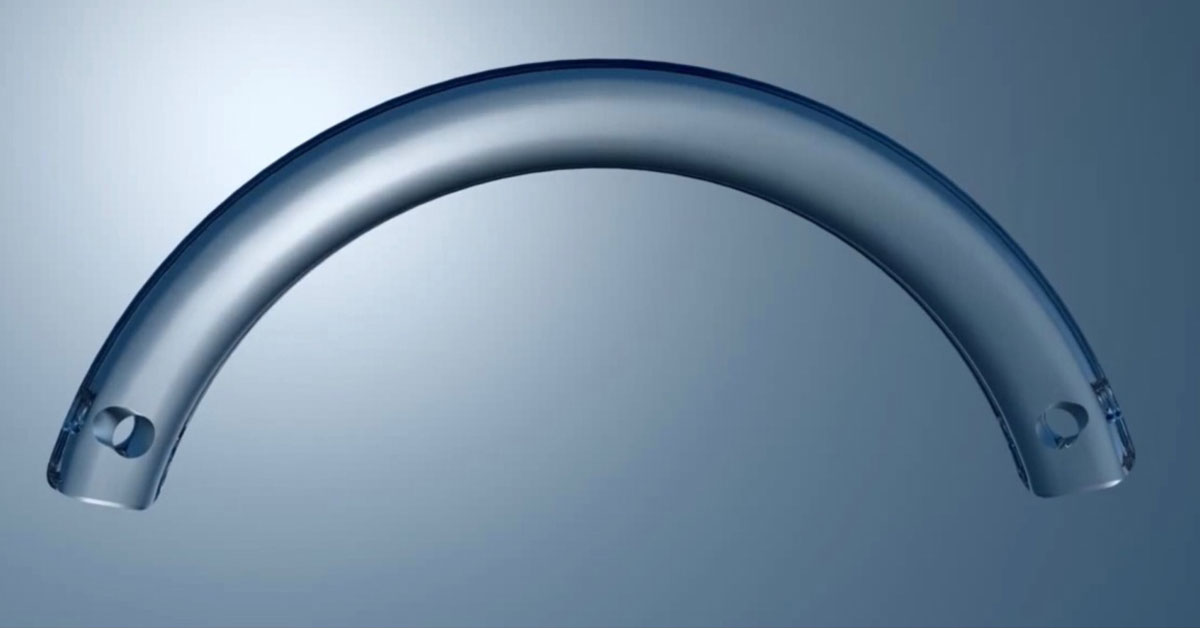Treatment of keratoconus by implantation of Ferrara rings
About treatment
Implantation of intrastromal rings (ICRS) or Ferrara rings, which are implants used in the treatment of advanced stages of keratoconus, is an effective treatment for advanced stages of keratoconus. Ferrara rings are a semicircular implant made of a special material (polymethyl acrylate), which has a triangular cross-section. The appropriate size of the kerarings is calculated using the manufacturer's special calculators according to the specified parameters of the patient's cornea.
Operation
During the actual surgery, which takes place under local anesthesia and lasts approximately 15 to 30 minutes, Ferrara rings are implanted into the patient's cornea using a special "tunnel" technique in the number of one or two pieces. The tunnel is created using a precise femtosecond laser. The femtolaser creates access "tunnels" in the cornea without the use of a scalpel, after which the surgeon inserts the semicircular implants into the cornea through the created tunnels. With this procedure, excessive curvature of the cornea is stabilized, visual acuity is improved and diopters are reduced.After the procedure, a protective contact lens is placed on the patient's eye, which is removed approximately 4 days after the procedure.
After surgery
It is necessary to complete the post-operative check-up on the second day after the procedure. After the operation, the patient drips local antibiotics and corticoids. The application of fluoroquinolone antibiotics 3 to 5 times a day for 7 days is recommended, with the application on the day of surgery being every 2 hours until midnight. Drops containing corticoids are applied longer. Application of artificial tears to increase patient comfort is also recommended.
The postoperative regimen is individual, we recommend staying in home treatment (ability to work) for at least 3-5 days. Patients should avoid rubbing their eyes and be careful not to get water in their eyes when showering. They should not visit saunas, wellness centers, swimming pools and facilities of a similar nature for at least 2 weeks.
The patient may feel some discomfort, burning, foreign body sensation in the eyes, may have unstable vision and halo effects up to 3 months after the procedure.

Advantages:
- Improvement of vision: Implantation of Ferrara rings can significantly improve vision in patients with keratoconus. Ferrara rings strengthen the cornea and reduce its conical bulge, correcting refractive error and image distortion.
- Decreased sensitivity to light: Sensitivity to light and headlights is a common symptom of keratoconus. Implantation of Ferrara rings can reduce this sensitivity and thus improve the patient's comfort during normal daily activities.
- Slowing or stopping the progression of the disease: Keratoconus is a progressive disease, meaning it gets worse over time. Implantation of Ferrara rings can slow or stop the progression of the disease, thereby preventing further deterioration of vision and the need for a corneal transplant.
- Delaying or eliminating the need for a corneal transplant: A corneal transplant is an invasive and complex surgical procedure that is recommended only in severe cases of keratoconus. Implantation of Ferrara rings can delay or completely eliminate the need for a corneal transplant in some patients.
- Quick recovery: Ferrara rings implantation is an outpatient procedure that is performed under local anesthesia. The patient can return home the same day after the procedure, and recovery is usually quick and painless.
- Improving quality of life: Keratoconus can have a significant impact on a patient's quality of life. Implantation of Ferrara rings can improve vision, reduce sensitivity to light and slow down the progression of the disease, thereby improving the patient's quality of life overall.
Risks and possible complications
As with other surgical procedures, the implantation of intrastromal rings is associated with risks and possible complications.
Possible complications:
- penetration of the cornea (either into the anterior chamber or through the epithelium): it can occur, for example, when creating an access tunnel in the cornea;
- postoperative infections;
- decentration or displacement of the implant: it can be caused, for example, by excessive rubbing of the eyes;
- halo effects: perception of scattered lights, especially at night but also during the day.








